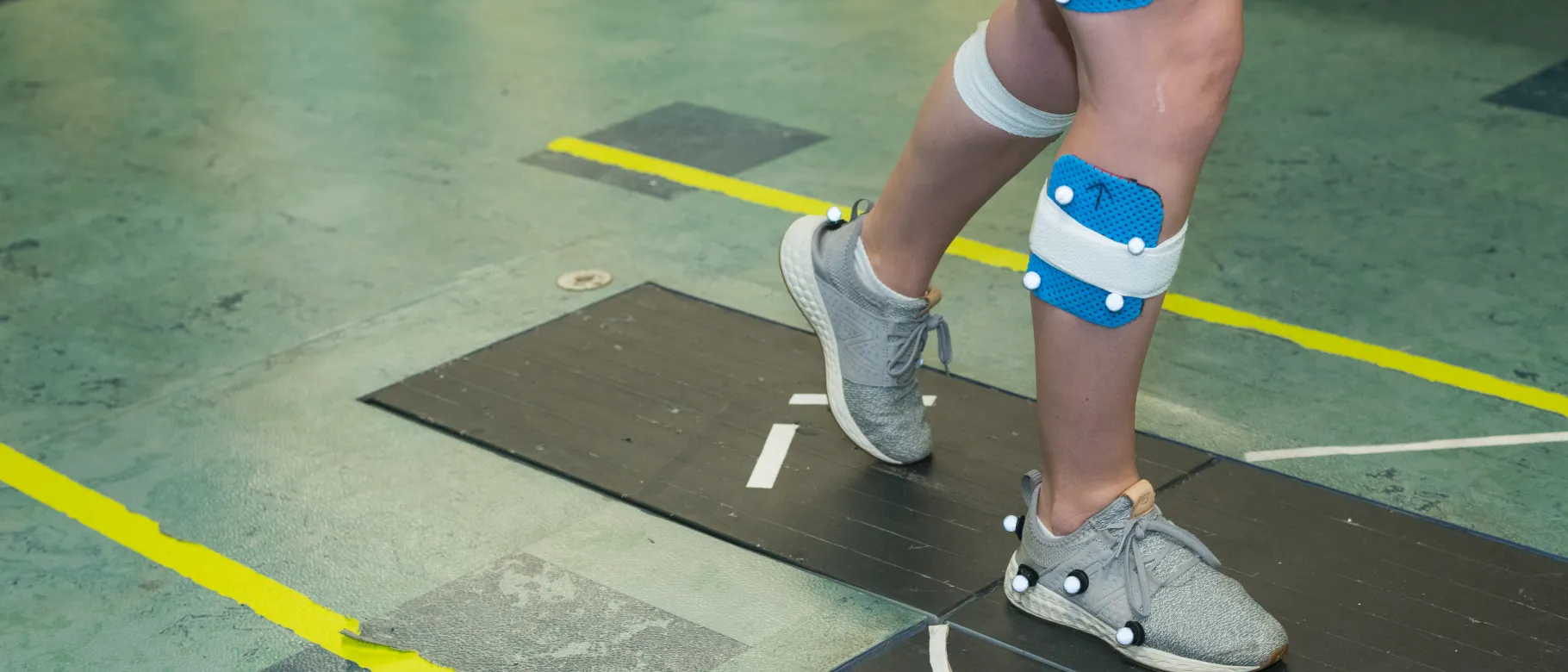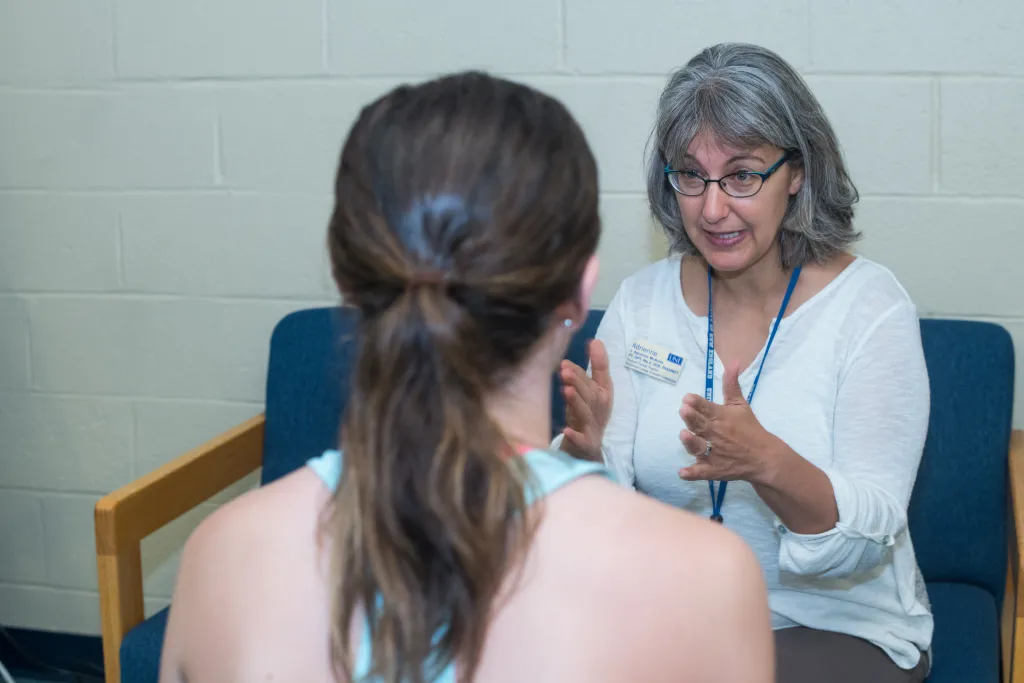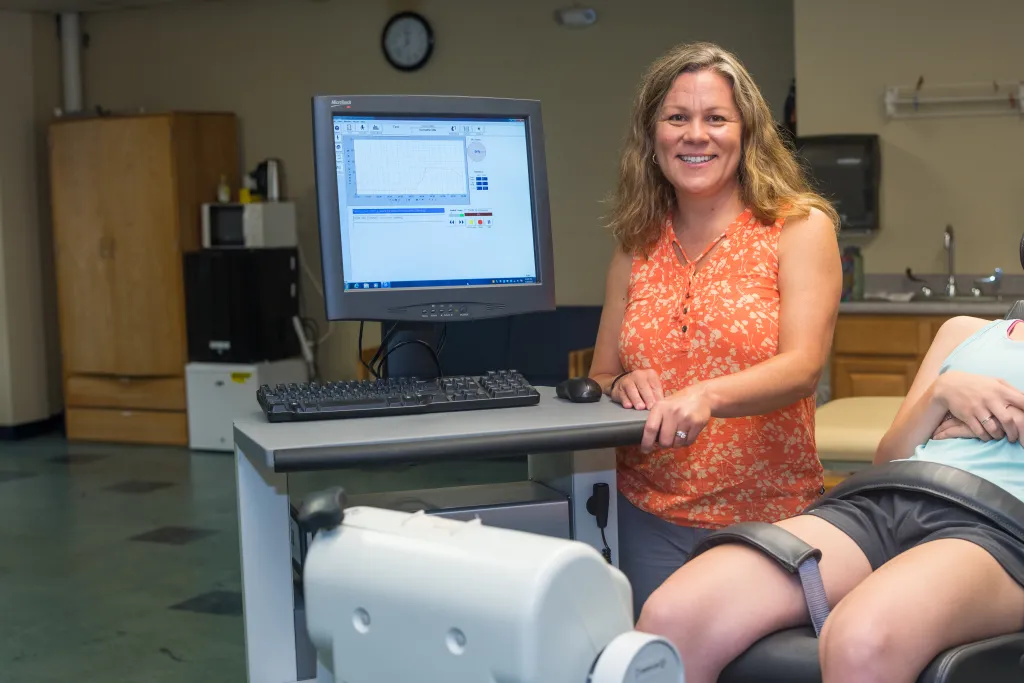For women living with stress urinary incontinence, UNE researchers are searching for answers

It’s a fact of life: there are a number of women out there who live with the uncomfortable and embarrassing problem of urine leakage when they cough, sneeze, laugh, jump or exercise. The condition, called stress urinary incontinence, is often associated with postpartum or post-menopausal women, but there are many premenopausal women, including college-aged athletes, who also live with the problem.
“I think there’s a large number of people out there who are living day in and day out with the problem and not realizing how easily treatable it is,” said Assistant Clinical Professor Adrienne McAuley, PT, D.P.T., M.Ed., who specializes in pelvic floor muscle function. “They need to learn how to use the muscles more effectively, more efficiently. It’s more than doing Kegels, which are pelvic floor muscle contractions. It’s learning how to do them correctly, and for some women, they might not be the right answer. It’s a problem that most women don’t bring up with their health care provider, and generally, not a conversation the provider will initiate.”
McAuley noticed that a number of her patients also had problems with their hips and began to wonder if there was a relationship between the two issues. She turned to her colleague in the UNE Department of Physical Therapy, Associate Professor Erin Hartigan, PT, D.P.T., Ph.D., who specializes in biomechanics, to get her take. Hartigan had asked during her initial evaluations if women had any issues with leakage, but after talking with McAuley, she realized she needed to clarify the question. “I’ll ask, so you’ve never peed a little bit when you exercise? And that’s when they’ll say, ‘Oh, well, sure, but it’s just a little bit. I just put on a mini pad and I’m fine.’ I’ll say, ‘well, that’s stress urinary incontinence and that’s not normal.”
Once she started asking the question differently, she found that women she worked with who had musculoskeletal problems in their hips and weren’t doing well after anterior cruciate ligament (ACL) surgery also had symptoms of leaking. The two researchers are now engaged in a study comparing women with stress urinary incontinence to women who are about the same age and doing the same activities but have no symptoms of incontinence.
Through this research, Hartigan and McAuley are learning about how some women cope with weaker pelvic floor muscles, and about the connection between pelvic floor muscle function and control of lower limbs. Hartigan says this will help physical therapists know where to focus efforts during an initial evaluation, and the importance of asking the right questions when working with women who are at risk for leaking. Future research will look at women with musculoskeletal injuries, specifically lack of hip control, and test whether pelvic floor muscle dysfunction is contributing.
“The ultimate goal is to optimize movement in women,” says Hartigan. “We hope to inform PTs about which questions to ask, identify associations between the pelvic and hip muscles and proper movements, and when to refer women to the most appropriate healthcare provider.”
"Stress urinary incontinence is a quality of life issue, and a symptom – an indicator that our pelvic and core muscles are not working optimally,” McCauley says. “Physical therapists are movement experts and should be considered as a first-line intervention for anyone experiencing SUI."
Read a story on the study in Catching Health.

